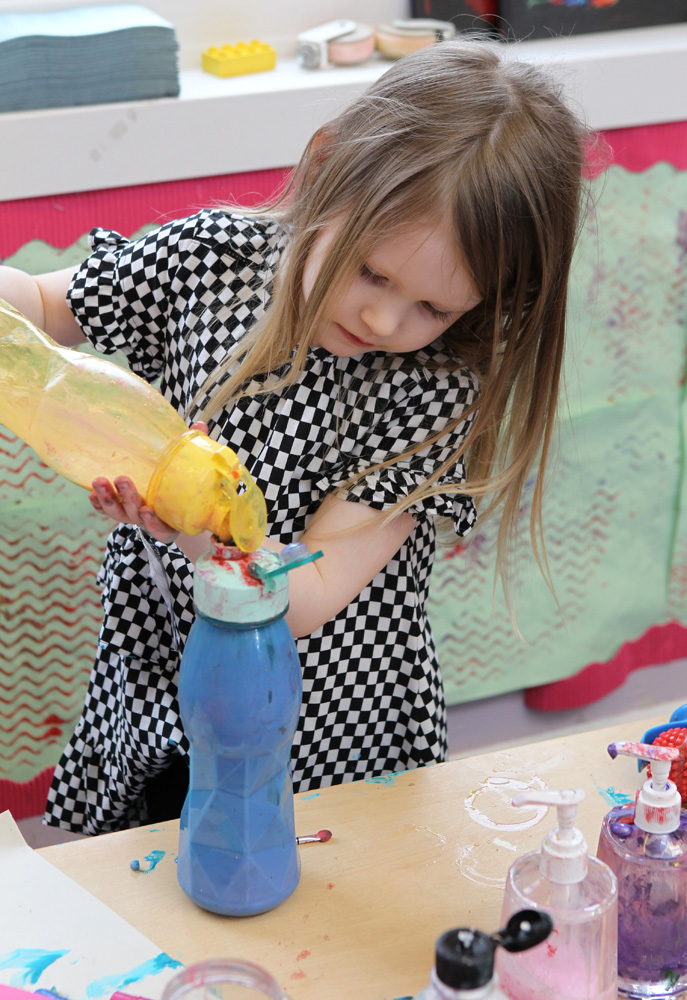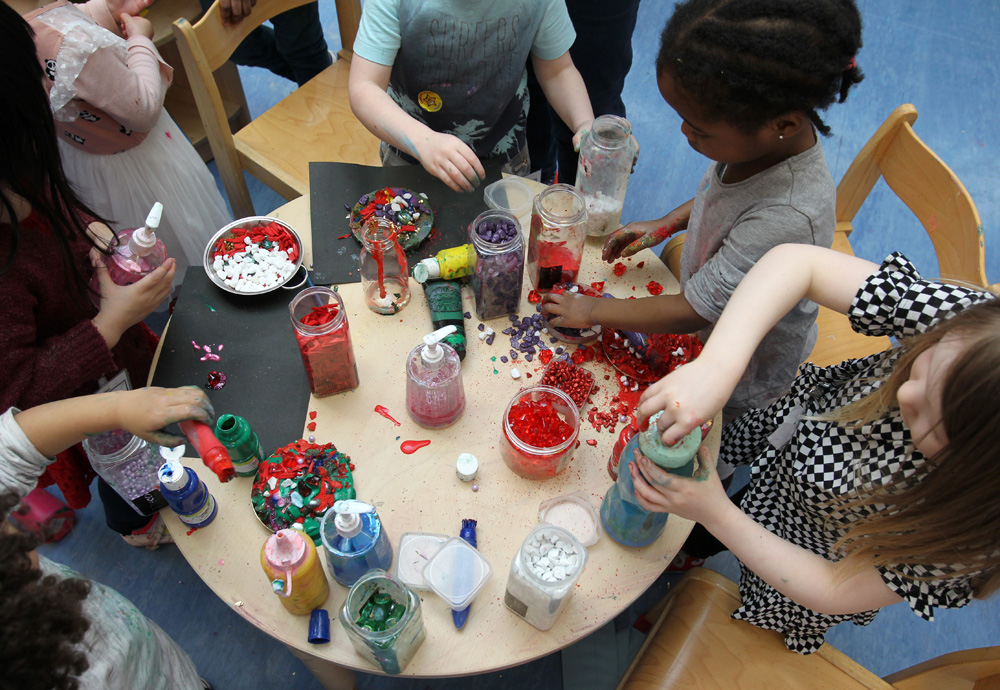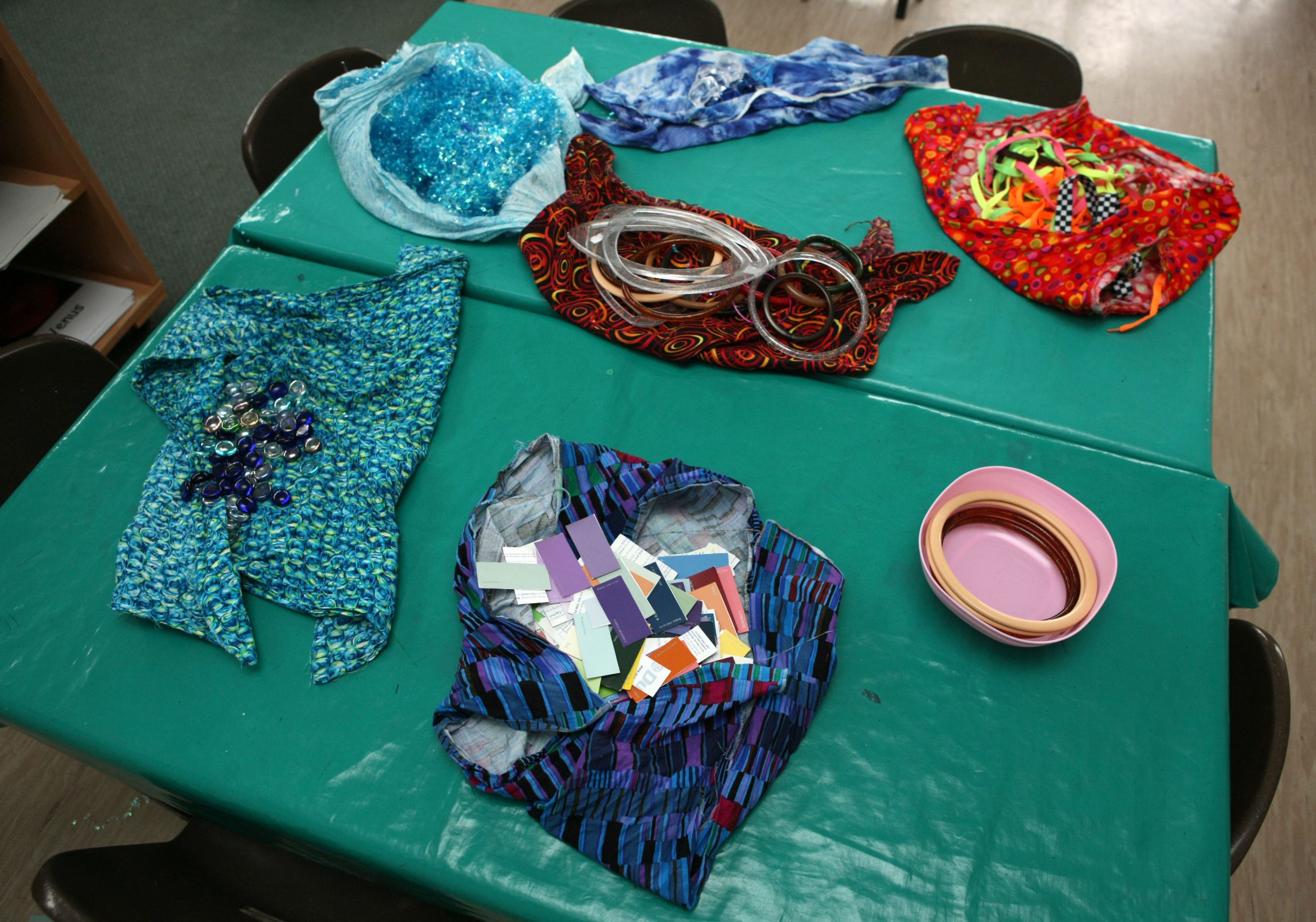Creating and Learning Through Art: Art Activities for Children
25.06.2020


I love art. I have always loved art. I am fascinated by any kind of art. I am puzzled by some modern ‘masterpieces’, an unmade bed, a mouldy sandwich but I guess it is in the eye of the beholder. What a boring world it would be if we all loved and appreciated the same creative outputs!
I am lucky enough to visit the end of year shows at Glasgow School of Art whenever I can (my husband lectures on the product design course there). Every year I am amazed and transfixed by what the students produce. Their imaginations emptied into a space! Speaking to the students about their work gives great insight to their design process and the elements that inspire them. Curiosity is high on their utterings. Curiosity and creativity, now that’s something I know about!

Children are curious creatures! They explore, question, and wonder, and by doing so, learn. From the moment of birth, we are drawn to new things. When we are curious about something new, we want to explore it, while exploring we discover!
One way that children can discover things through curiosity is through art that allows them to think, respond to materials and create, bringing their wee ideas to perhaps a product or just the end of their thinking journey. Art experiences that allow children to explore, experiment and create has so many benefits to our children learning!

Art is a way that children can express themselves; share what they see, how they feel, their wishes for the future or even what they want for lunch that day. Art is a therapeutic process and can be done in so many ways, so let’s explore:
Concepts and Language
Art activities can teach our children many different concepts. Think chemistry when we add powders to liquids to make compounds to model with or paint with. Alternatively, placing loose part items together in a symmetrical manner to create a butterfly or flower or tree may see them count, match, pair consider one to one correspondence, mathematical thinking gone wild, not to mention the language that goes along with these activities.

Here are a few of the elements of art that we will see our children being exposed to.
Line is a path created by a moving point, mark or object. It is a dot that takes a walk. Lines can be straight, swirly, wavy, jagged, dotted, dashed, broken, thick, thin, zig zag, diagonal, vertical, horizontal, curved, bold, parallel or perpendicular.
Shape is a two-dimensional (2D), flat enclosed area. When a line crosses over itself, it creates a shape. Examples of shapes could be geometric, organic/natural, irregular, circle, square, rectangle, diamond, oval, crescent, heart, triangle, and octagon.
Texture is used to describe either the way a three-dimensional work actually feels when touched, or the visual “feel” of a two-dimensional work. Texture is how something feels or looks like it would feel if you could touch it. It could be squishy, smooth, rough, course, thick, thin, slidy, slippery, soft, jaggy and so on.
Colour is what is produced when light, striking an object, is reflected back to the eye. Colours have so many shades and tones, think of all the wonderful words we have for colours: ochre, chartreuse, eggshell, periwinkle, rust, amber, magenta, and turquoise, or charcoal.

Movement and Techniques
Lots of children enjoy making marks, drawing, and painting at tables or easels but let’s think about how we can move art into our other environments. What art could we create in the garden? In the kitchen? Maybe we could be standing, while we hold our paintbrush up and let it drip down to the floor. What if we move our whole bodies while we create, rather than just our arms and hands? There are so many ways to get creative and keep things interesting.
Think about painting, for example, what can we use to paint? A brush of course but we can use it to flick, drag, splash, drip, and splat the pain on our canvas as well as using the brush directly on the paper. We could also use our hands, mark makers, things from the outdoors like a leaf to make prints and textures on the page.
We could use paint, ink, water and food colouring, mashed up berries, mix coffee or hot chocolate with water, make up that’s going to be thrown out, as long as it’s all child safe of course.
Activities
Here are some wee ideas to get you started!
Use some cinnamon sticks or scented candles to draw on sandpaper scraps.
Use some lightly coloured water in spray bottles to squirt a rainbow on a window or fence outside and when it rains (or use a hosepipe) watch the colours merge together and change.
Do some weaving on a bush outside or the branch of a broken down tree you find in the park. Offer ribbons, strings, yarn, felt strips, scarfs, strips of old material.
Create a structure from lots of empty food packages, milk cartons, chocolate tins, and cardboard tubes. How will they balance, stay upright. How will we attach them? Lots of critical thinking to be engaged in.

